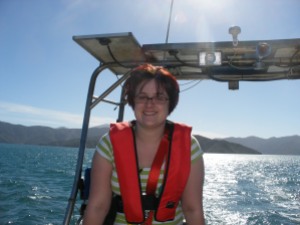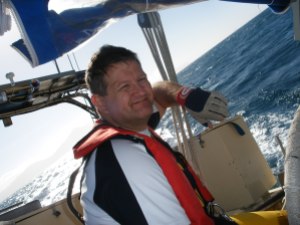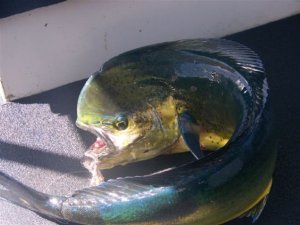
A word about seasickness medication – don’t knock it. And for the love of Neptune, if you aren’t used to sailing, don’t try to be macho and tough it out without it.
I learned that one the hard way during my first Cook Strait crossing on the way to Queen Charlotte Sounds. I did the whole “I don’t get motion sickness, I don’t need drugs” routine.
Big mistake.
To be fair we had a horribly sloppy sea with 4/5 m swells, so it wasn’t going to be a comfortable trip anyway – but I’m sure I would have been able to handle that fine if I’d just taken the damn pills!
Instead I spent the latter part of the trip hugging a bucket.
There is a much more scientifically accurate way to say this but basically motion sickness happens when your inner ear starts squabbling with your eyes. Your inner ear tells you that you’re moving while your eyes are convinced you are staying still – your tummy then decides to opt out of the whole argument by expelling its contents. Repeatedly.
That’s why they tell you to keep an eye on the horizon – that puts your eyes and your brain back on the same page. Unfortunately, on that particular trip, I was too far gone for that trick to work so poor old Paddy ended up bringing the boat in single-handedly while I wedged myself in a corner and refused to move.
One of the worst things you can do if you are prone to motion sickness is go below deck, because then you have no reference point – and that was exactly what I did. I went below to go to the toilet and when I came back it was all on. Lesson learned.
Some people don’t like taking drugs because they can make you drowsy, but Paddy has discovered an answer for that in some awesome little pills called Paihia Bombs. These work for 24 hours so you can take them the night before, get a good night’s sleep and be alert in the morning without getting sick. They rock!
My second brush with seasickness was very Monty Python. We were holidaying in Vanuatu and went out fishing on a charter boat. I didn’t even think about taking seasickness pills because we weren’t going that far out. But the boat was a lot smaller than Wildflower and therefore a lot rockier. It all happened so fast. One minute I was sitting up the front of the boat and the next I was doubled up over the side (NOT a safe position to be in – another lesson learned). Again I wedged myself into a corner with a bucket and again was so paraliticly sick I couldn’t move. Unfortunately the spot I had chosen was right in front of the fishing rods and people were having to climb over me to get at them.
This was fine until Paddy managed to land a 7kg mahimahi, which clobbered me in the head on its way aboard. So, ladies and gentlemen, I have actually been slapped in the face with a wet fish – and it wasn’t a pleasant experience!
The funny thing about seasickness is that while you are going through it, it feels like you are dying, but the second the motion ceases it all goes away. That’s because your body isn’t actually sick, it’s just really confused.
And before you start worrying Mum, I have been out plenty of times since then and haven’t been sick at all. Apparently it takes about three days in the open ocean before your body gets used to the motion. In the meantime though, the drugs are working for me so I’m sticking with them!
And I got the last laugh on the fish in the end – it was delicious!


